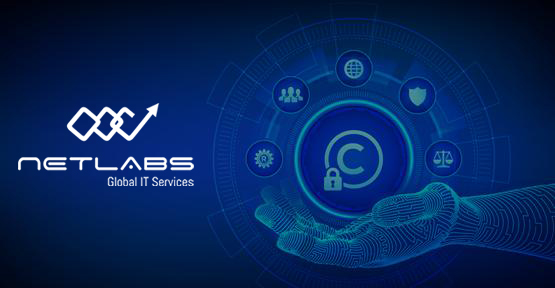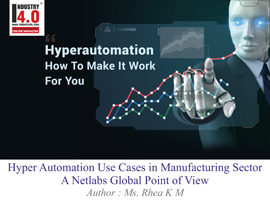How can OpEx licensing solutions benefit your organization?
Traditionally, IT solutions have been purchased as capital expenses because they have been purchased as licenses. The solutions are considered investments because the buyer ‘owns’ them once they purchase, and they offer value to the organization well after the initial year of purchase. This might seem like a good thing, gaining an asset, but it is actually not in the world of IT.

“A recent study has found that OpEx users save 60-65% of their IT budgets compared to their CapEx counterparts. Let’s take a closer look at how OpEx solutions can benefit your business.”
When procuring IT equipment, most organizations lean towards looking at two options: CapEx and OpEx. But what’s the difference?
When you pay for all your assets at once, we bookmark them as capital expenditures, or CapEx for short. Although CapEx includes a high upfront cost, they are only incurred once in the assets’ lifetime.
 What is the implication of CapEx in your budget?
What is the implication of CapEx in your budget?
There are many reasons OPEX purchased solutions (subscriptions or pay-as-you-consume service models) are superior to CAPEX solutions (asset investments).
1. OPEX purchases are non-taxable. While CAPEX purchases also have tax write-offs and deductions, it is generally agreed that the value is smaller than the savings from not paying any taxes on a purchase whatsoever. Therefore, in absolute terms, a solution purchased at equal value as an OPEX purchase rather than a CAPEX purchase is considerably cheaper.
2. CAPEX purchases are not truly one-time purchases. An organization pays around 20% of the initial purchase price as an annual maintenance contract (AMC) to the vendor to keep the solution up-to-date and for bug fixes and minor upgrades. Therefore, the total cost of a CAPEX purchase is significantly higher year on year than the raw price of the investment. OPEX purchases, on the other hand, are paid for all-inclusive maintenance charges.
3. With a CAPEX purchase, you are saddled with a permanent license. If the solution does not achieve the desired results, or if the vendor becomes insolvent or ceases to support the product, you need to purchase a new license for a new product to replace the old one’s functionality. This is a massive extra cost. Large sums of money can easily be wasted on a poor purchase.
4. Another disadvantage of CAPEX purchases is that they might require your own hardware and staff to maintain and run. This is a high additional overhead cost, and non-IT businesses don’t want to spend on hardware and staff that do not pertain to their core business. Hardware requirements for OPEX purchases, on the other hand, are handled by the service provider. Since the advent of cloud computing, as-a-service delivered IT solutions are hosted and maintained by the vendor at an all-inclusive subscription cost or on a pay-as-you-consume basis rather than by the buyer. This means significant savings and offloading of responsibility, allowing businesses to focus on their core competencies instead.
5. The cost of subscription OPEX purchases is considerably lower due to small per-user subscription costs. This number is reduced even further if the purchase is made for a ‘pay-as-you-consume’ service because employees on leave or low-use job roles get discounted from the total paid.
6. Purchase approvals could be far easier for OPEX billed solutions than CAPEX ones. C-level executives and managers that authorize purchases are far more cautious when purchasing expensive capital investments than when purchasing cheap or moderately priced subscriptions to services that can be discontinued at any time. In terms of agility and’ keeping with the competition’, OPEX billed IT solutions to offer the distinct advantage of agility.
7. On-premise IT infrastructure is universally known for demanding a huge upfront cost. And unsurprisingly, these major costs can seem to be discouraging to most organizations operating within a slim budget.

Nowadays, software solutions are both agiler and more cost-effective than ever before. Instead of purchasing costly licenses in a CapEx model, the current trends point towards SaaS options that require small, monthly subscriptions that run via internet connections. SaaS solutions can streamline business cash flow over time with low monthly costs without forcing you into a long-term commitment.
If you find a solution that doesn’t really fit your requirements, you can easily cancel and switch to one that better suits your needs. Many organizations, especially SMEs, find OpEx to be a much better solution as it causes only a minimal impact on the cash flow.
How does OpEx Licensing work?
If you require two licenses this month, you pay two licenses, but if next month you use 30, then you will pay 30, and then you can go back and pay only the two initial licenses or the amount you need while enhancing the business needs to meet demand spikes. There are no minimum or maximum quotas.
With this model, Major OEMs like Microsoft, REDHAT, VMware, Veeam, Citrix, to name a few, are treating the software as a service “pay-for-what-you-use,” which allows them to increase their flexibility, accelerate profitability, and establish a recurring revenue model to expand the business. In addition, this program makes software costs transparent to end-users, who may also treat the software as operating costs rather than capital.
This model provides usage rights to third parties who are the owners of these licenses, so that end customers receiving services deployed on such licensed products do not need to get their own licenses. End customers receive the right to directly or indirectly interact with functionalities of software through such licensing service providers.
No long-term commitments, pay only for the number of licenses you have used. You have the flexibility to increase or decrease the quantity of licenses based on your need.
Which is the right solution for you?
Initially, it’s important to realize that there are obvious pros and cons to both options.
OpEx is favored by many organizations because it avoids making a negative impact on the cash flow. Instead, you will face monthly payments that are necessary to ensure that your organization runs smoothly on a daily basis.
Compared to OpEx, you’ll find that CapEx solutions can bring plenty of benefits to the accounting side of your business. If the asset’s useful life extends beyond a year – which is in most cases will – the cost will be expensed using depreciation. The obvious downside of CapEx is, of course, that the more money out towards CapEx will mean less cash flow for the rest of your business, something which can be a severe burden to SMEs.
Conclusion
OPEX purchases in the world of IT solutions are far more desirable than CAPEX purchases, and this trend is already growing when it comes to industry offerings. Lower total costs, more scalability, and, therefore, agility, and much lower hardware overheads are just some of the benefits of OPEX purchases. Getting purchase approvals for purchases is also easier as total costs are considerably lower and no long-term commitments are required.
Netlabs Global is a leader in helping our businesses adopt smart cutting-edge technologies, smart industry practices and smart people talent solutions to stay ahead of the curve. Talk to us today to learn more about how our solutions and services can help transform your business.
About the Author

Mr. KANAK CHANGELA
Head – OEM BU and Alliances & Partnerships
NETLABS GLOBAL IT SERVICES PRIVATE LIMITED
He Can be contacted at
Mobile : +91 91640 00034
E-mail : [email protected]
LinkedIn : https://www.linkedin.com/in/ka
Netlabs Global IT Services – Social Media Links
Website : http://www.netlabsglobal.com
LinkedIn : https://www.linkedin.com/company/netlabsglobal
Twitter : https://twitter.com/netlabsglobal
Also read Netlabs Global earlier articles

















